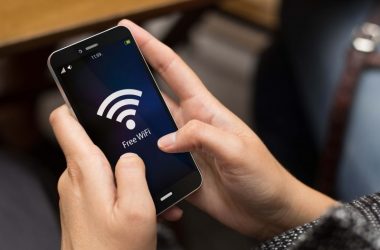 By the end of 2010, users in more than 80 U.S. cities may be able to ditch their cable modems, T1 setups and DSL lines — and the Wi-Fi routers that go with them — in favor of WiMax (Worldwide Interoperability for Microwave Access) broadband wireless technology.
By the end of 2010, users in more than 80 U.S. cities may be able to ditch their cable modems, T1 setups and DSL lines — and the Wi-Fi routers that go with them — in favor of WiMax (Worldwide Interoperability for Microwave Access) broadband wireless technology.
Wait, haven't we heard that before? WiMax has been promised “any day now” for years, but WiMax vendors such as Clearwire Communications LLC have suffered numerous delays in rolling out services. A recent ramp-up in Clearwire deployments bodes well for WiMax, but it may not have the chance to fully get off the ground before a competing technology called Long-Term Evolution (LTE) does it in.
Craig Mathias, principal analyst at Farpoint Group and a Computerworld columnist, sees WiMax taking a minority stake in the wireless broadband future. “LTE will eventually be a combined broadband voice/data solution that can do everything that WiMax can and more,” he said via e-mail.
Mathias believes that LTE could get up to 80% of the global market share in future cellular installations. “This leaves WiMax with a potential market share that cannot exceed 20% — but that's still a huge number, assuming 4 billion users around 2020 or so,” he said. “You do the math. The opportunity is nothing to sneeze at.”
The promise of WiMax
Clearwire and partners like Intel, Comcast, Time Warner Cable and Cisco want to change the last networking mile in the same way that Wi-Fi changed the last 100 feet of networking: by complementing or possibly replacing the existing technologies.
WiMax can cover up to 31 square miles instead of the few hundred square feet per access point provided by the more familiar 802.11g and 802.11n Wi-Fi technologies. In theory, WiMax can also deliver more than 75Mbit/sec. data-transfer speeds. In practice, it doesn't have either that range or that speed. But with real-world speeds of up to 9Mbit/sec., it's about as fast as today's standard 802.11g (though not as fast as 802.11n), and it offers far greater range than any Wi-Fi technology.
Arthur Giftakis, vice president of engineering at Towerstream Corp., a national WiMax provider for businesses, believes WiMax will deliver “high-speed mobile services that consumers and business users alike are demanding more and more,” such as the ability to watch sports highlights on a laptop on the train or download apps on a handheld device. “WiMax will enable you to do those things faster than previous technologies,” he said in an e-mail interview.
WiMax incorporates quality of service technologies for prioritizing network traffic, and that is particularly important for voice-over-IP and video applications, noted Joel Payne, vice president of engineering and operations at Sparkplug Inc., a national Internet service provider serving the business market. In contrast, Wi-Fi access points can be overwhelmed by multiple clients demanding simultaneous access. “The WiMax protocol will be important for applications that require a lot of data to be transmitted on time, and to decrease packet loss and latency,” said Payne via e-mail.
Jesse Jones, owner of Matanuska Wireless, a data communications company in Palmer, Alaska, agreed, citing Internet Protocol television as a technology that can greatly benefit from improved quality of service. “IPTV via WiMax is one of the most exciting developments,” Jones said in an e-mail interview. However, he added, “there is no word yet” on when the first working IPTV via WiMax models will be available.
How fast, how far, how much?
Just how high-speed is WiMax? The honest answer is “it depends.”
“Speed and coverage area depend on several factors, such as frequency, terrain and tower height,” Jones explained. “Any amateur radio operator or electrical engineer can tell you that propagation characteristics vary significantly based on frequency.” In other words, a deployment on 700 MHz will have a different coverage area than one based on 2.3 GHz or 3.65 GHz.
Further, “the flat, open fields of Kansas will see different coverage on 3.65 GHz than my neighborhood nestled at the base of three mountain ranges in Alaska,” he continued. A base station mounted 40 feet high on a tower will reach far fewer subscribers than if it was mounted 80 feet high. And the amount of throughput users see on a wireless connection is directly related to the signal quality, Jones said. “You really can't make general statements related to speed and coverage because not every deployment is the same.”
Clearwire reports that its WiMax users are seeing average speeds of 4Mbit/sec. to 6Mbit/sec., with bursts exceeding 15Mbit/sec. — about the same throughput that DSL services provide. To get that level of performance, you can expect to pay about as much as you currently do for DSL.
Although WiMax offers no huge speed advantage over today's technologies, pricing may be a selling point. Towerstream's Giftakis said, “I can confirm that our business customers will be paying less than market T1 prices to get WiMax. On the consumer side, Clearwire is offering service from $10 for a day to $50 for a month. I don't expect this will drastically change in the near term.”
WiMax, Wi-Fi or both?
To access WiMax, you're going to have a wide variety of hardware choices, including notebooks, netbooks, handhelds and mobile Internet devices with built-in WiMax radios, according to Julie Coppernoll, director of marketing for WiMax at Intel Corp. “Numerous embedded WiMax laptops based on Intel Centrino 2 processor technology are now available,” she said via e-mail. In addition, USB modems will bring WiMax into your home or office, replacing your wired Internet connection.
But WiMax won't necessarily replace Wi-Fi. WiMax/Wi-Fi translators, such as Cradlepoint Inc.'s Clear Spot router, can create a local Wi-Fi network from a WiMax signal. That Cradlepoint device, which is available now, allows any existing, off-the-shelf Wi-Fi device to connect to a Clearwire WiMax network, said Coppernoll. “The Clear Spot creates a personal Wi-Fi hot spot that travels with consumers anywhere they happen to be within Clearwire's mobile WiMax service area,” she said. Using it, people can avoid local Wi-Fi hot spot fees — and, as WiMax rollouts continue, they might be able to pick up WiMax service in areas where they can't find a Wi-Fi hot spot.
Other companies are also bridging the gap between WiMax's 802.16 and Wi-Fi's 802.11 protocols. Cisco Systems Inc., for instance, plans to introduce devices with that capability under its Linksys brand within the next six months.
Wi-Fi Alliance executive director Edgar Figueroa also sees WiMax and Wi-Fi working hand in glove rather than the newer technology replacing the older. “While WiMax provides excellent range, Wi-Fi's performance profile and power consumption traits make it the right networking technology for the local area,” he said in an e-mail interview. “As we're seeing today on the cellular side, WiMax providers will also look to Wi-Fi as an alternative connection to migrate users from scarce licensed spectrum — and users will gravitate to Wi-Fi for its affordability.”
When can I get WiMax?
Clearwire's WiMax service, known as Clear, is available in four large U.S. cities today — Baltimore, Atlanta, Las Vegas and Portland, Ore. — and in 10 smaller cities in Texas, Idaho and Washington. Rollouts in Chicago, Philadelphia, Dallas/Fort Worth, Seattle, Honolulu and Charlotte are also scheduled for this year. The company plans to offer service to as many as 120 million customers in 80 U.S. markets, including New York, Boston, Washington, D.C., Houston and San Francisco, by the end of 2010.
While Clearwire gets the lion's share of WiMax publicity, it's far from the only company in the WiMax broadcasting business. AT&T Inc., for example, has rolled out WiMax service in Alaska for residents of Anchorage and Juneau. And Intel is working with Clearwire to launch the “WiMax Innovation Network” in California's Silicon Valley to serve as a test environment for mobile application developers at companies like Google Inc.





